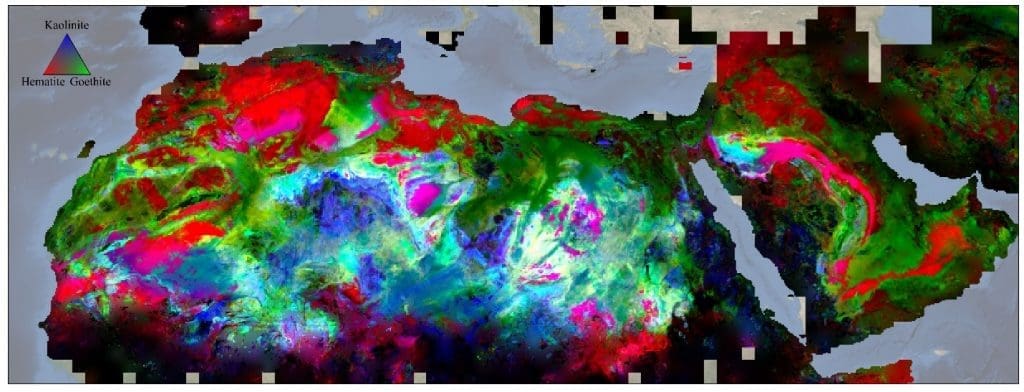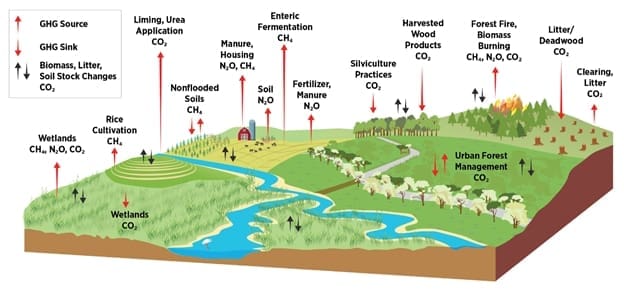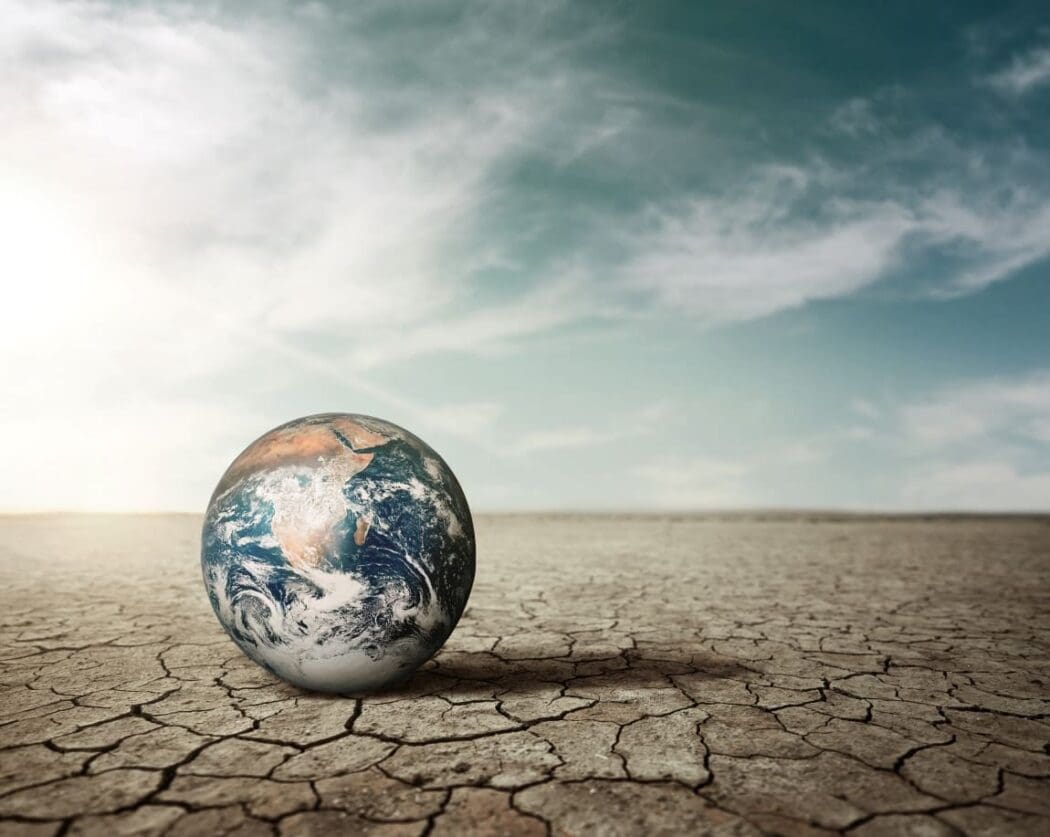By Courtney Sakry | Virginia Tech College of Engineering
Hosein Foroutan is on a mission to reduce the uncertainty regarding climate change.
While many people think of the effects of greenhouse gases such as carbon dioxide, there are other aspects of climate change that are less familiar to the general public. Foroutan, associate professor in civil and environmental engineering and an affiliated faculty of the Global Change Center in the Fralin Life Sciences Institute, wants to bring these impacts to the forefront.
With two innovative projects totaling nearly $1.4 million, Foroutan is focusing on airborne mineral dust and nitrous oxide from soil and will address aspects of climate change including the Earth’s radiation balance and agricultural greenhouse gas emissions.
Decoding dust
Mineral dust plays a pivotal role in shaping the Earth’s climate and ecosystems.
“Every year, 1 [billion] to 2 billion metric tons of mineral dust are emitted into the atmosphere,” said Foroutan.
Originating from dry regions, dust emissions serve as significant sources of atmospheric aerosols. They can change how clouds form and precipitate, affect the quality of air we breathe, and influence how plants grow. To address the role of dust mineralogy on these processes, advancements have been made in surface soil mineralogy atlases based on field observations. However, these atlases are very sparse and do not account for regional variability in dust radiative and biogeochemical properties.
The NASA Earth Mineral Dust Source Investigation (EMIT) mission represents a significant leap forward in the understanding of dust mineralogy. Utilizing hyperspectral imaging, EMIT gathers data on the color and composition of Earth’s dry regions from the International Space Station. This wealth of data promises to enhance comprehension of Earth’s mineral dust cycle and its impact on Earth’s temperature – either by reflecting sunlight or trapping heat.
Despite the potential of EMIT data, there is still a lack of resolution to fully capture atmospheric dust plumes’ dynamics and processes. Bridging this gap is imperative to refine the understanding of dust’s role in the Earth system and to leverage EMIT’s potential in advancing scientific knowledge.
“We do not yet fully understand if dust particles warm or cool the atmosphere,” said Foroutan. While data from EMIT provides a higher level of understanding about the mineralogy of soil and dust on Earth’s surface, the question of how the mineralogy of airborne dust differs from that of parent soil still remains. “Our project aims to address this critical question.”
Foroutan has been awarded $680,000 by the NASA Science Mission Directorate for research on the evolution of mineralogy and geochemistry of dust plumes in an effort to bridge this gap.
Why it matters: Mineral dust plays a crucial role in Earth’s environmental processes, affecting climate and ecosystems. Dust from arid regions are a major source of atmospheric particles, influencing solar radiation, cloud formation, precipitation patterns, air chemistry, human health, and nutrient distribution.
The oversimplification problem: Many climate models treat dust as a uniform substance, overlooking composition variations that significantly impact its effects. This simplification can lead to inaccuracies as different compositions, such as varying iron oxide levels, can change dust’s influence from cooling to warming.
The EMIT mission: In 2022, NASA’s EMIT mission began mapping the mineral composition of arid regions with advanced imaging to improve our understanding of Earth’s dust cycle. However, there we still lack detailed knowledge of how dust mineralogy evolves during atmospheric travel, especially on regional scales.
This study: This project will focus on the relationship between dust mineralogy and atmospheric processes, particularly between African source regions and Tenerife, Canary Islands, Spain. By analyzing dust samples from these areas, Foroutan and his team aim to understand how dust composition changes during its journey and its impact on climate, in an effort to ultimately reduce uncertainties in climate models.
Approach: The team will integrate data from satellite observations, ground-based measurements, and atmospheric modeling to uncover how dust affects the Earth’s climate. The team will utilize a multiplatform framework to establish connections between dust mineralogy changes and atmospheric processes.
Who is involved: Foroutan is the principal investigator on a team made up of:
- Frederick M. Michel, associate professor of geosciences at Virginia Tech;
- Cristina Gonzalez Martin from the University of La Laguna in Tenerife, Canary Islands, Spain;
- Ali Hossein Mardi, postdoctoral scholar in civil and environmental engineering at Virginia Tech.

Enhancing agroecosystems models
Foroutan’s second project seeks to address challenges in estimating nitrous oxide emissions from agricultural soil on a national scale. He has been awarded $715,000 by the U.S. Department of Agriculture to evaluate and update the atmospheric component of agroecosystem models to better understand nitrogen cycling and greenhouse gas emissions. This effort, led by a partnership between the Department of Agriculture, the Natural Resources Conservation Service, and Foroutan’s team, will evaluate and enhance the accuracy of nitrogen cycling and greenhouse gas emission modeling in multiscale agroecosystem models.
The project titled, ‘Integrated Agroecosystem-Atmosphere Modeling Improvement for Climate and Conservation Assessment’, will integrate process-based atmospheric modeling with cropping and soil system models over the entire United States.
The agricultural climate threat: Nitrous oxide is a potent greenhouse gas that can absorb infrared radiation, trapping heat in the atmosphere and contributing to global warming. Agriculture is the largest source of nitrous oxide emissions, primarily from the application of synthetic and organic fertilizers. The microbial processes of nitrification and denitrification in soils convert nitrogen from fertilizers into nitrous oxide, which is then released into the atmosphere.
Why it matters: Nitrous oxide has a global warming potential of approximately 300 times that of carbon dioxide over a 100-year period. Emissions mainly come from fertilizer application and livestock farming, making agriculture a key contributor to global warming and ozone depletion.
Foroutan explained that about 77 percent of nitrous oxide emissions in the United States are released from agricultural soils. “It is crucial to accurately estimate these emissions at a national scale to understand the interconnected impacts of agricultural management and climate change,” he said.
The estimation challenge: Accurately estimating nitrous oxide emissions requires understanding nitrogen input and output pathways, like ammonia volatilization, nitrogen oxides emissions, and nitrogen deposition. These pathways are often overlooked in agricultural models, leading to gaps in our understanding of nitrogen cycling.
This study: The researchers are developing a unified agroecosystem-atmosphere model that integrates these pathways across scales and between air and crops. This model will combine agricultural management data with an atmospheric component to better quantify the nitrogen cycle.
The approach: Foroutan and his team will develop a comprehensive assessment framework integrating the Environmental Policy Integrated Climate and the Community Multiscale Air Qualitymodeling systems. This framework will be evaluated using a series of field measurements and satellite data to accurately represent the processes between the atmosphere and agricultural soil under various landscapes and soil management practices.

Both projects hold significant promise for advancing our understanding of complex environmental processes and improving modeling capabilities. The insights gained from these endeavors have the potential to inform policy decisions, guide conservation efforts, and contribute to more sustainable practices in agriculture and environmental management.
As these projects continue to unfold, their findings are expected to play a crucial role in addressing pressing environmental challenges, ultimately paving the way towards a more resilient and sustainable future.
More information: VT Press Release/Material. Featured image credit: Freepik




